A Technical Deep Dive Into Chainlink
Chainlink enables developers to program workflows across blockchains and external systems while embedding key data, compliance policies, and privacy technologies. These workflows are powered by decentralized oracle networks to provide cryptographic guarantees, prevent single points of failure, and enable auditability.
If you are new to Chainlink, we encourage you to read our What is Chainlink? Beginner’s Guide. As a reminder, Chainlink is the connective tissue between blockchains and the outside world, including external data, other blockchains, enterprise/government systems, and different technologies. It’s all in the name: “Chain-link”.
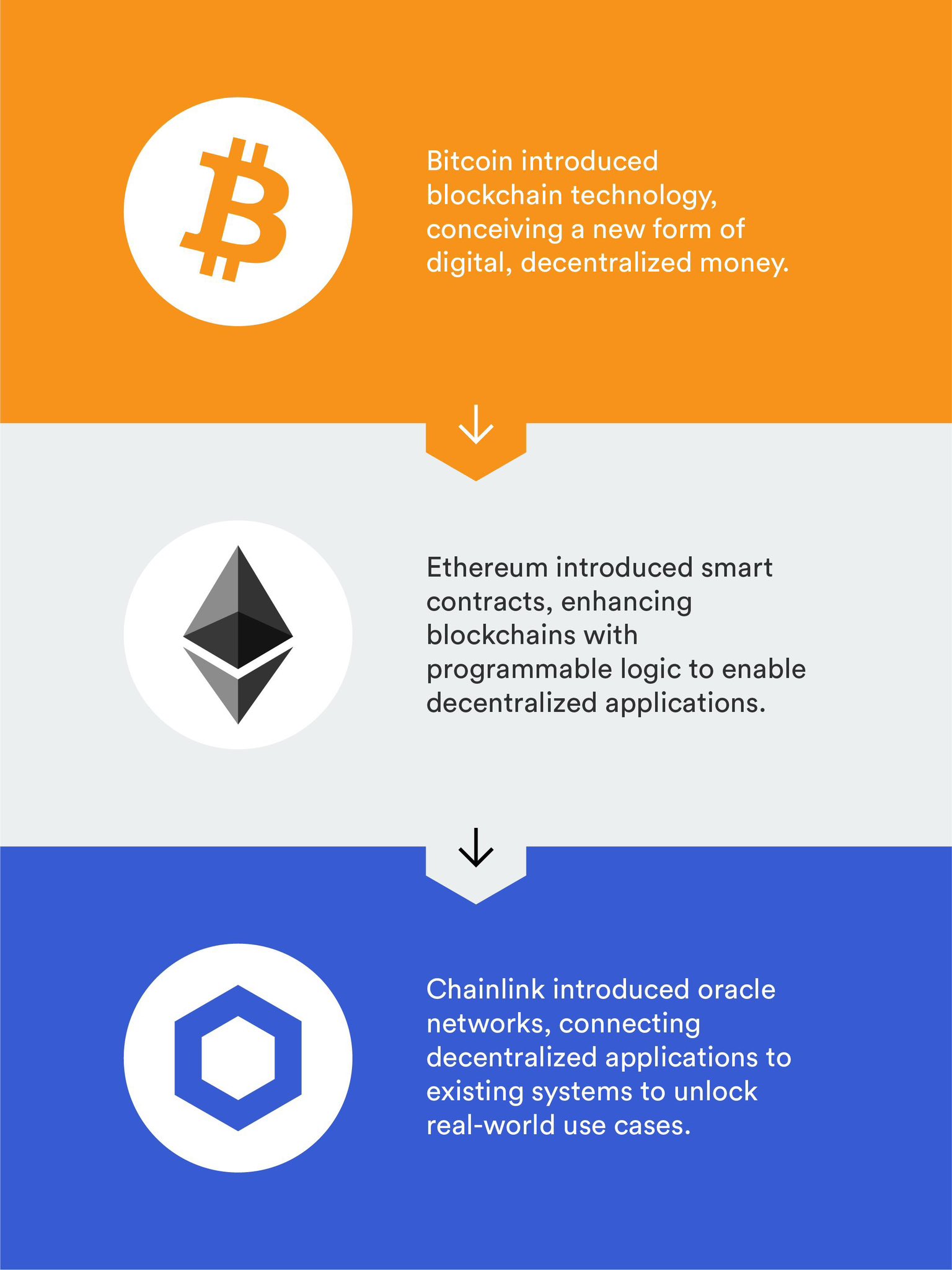
This blog will go deeper into the technology underpinning Chainlink, including the current architecture and the various Chainlink services it supports, before discussing the ongoing upgrade to the Chainlink Runtime Environment (CRE).
Chainlink Architecture
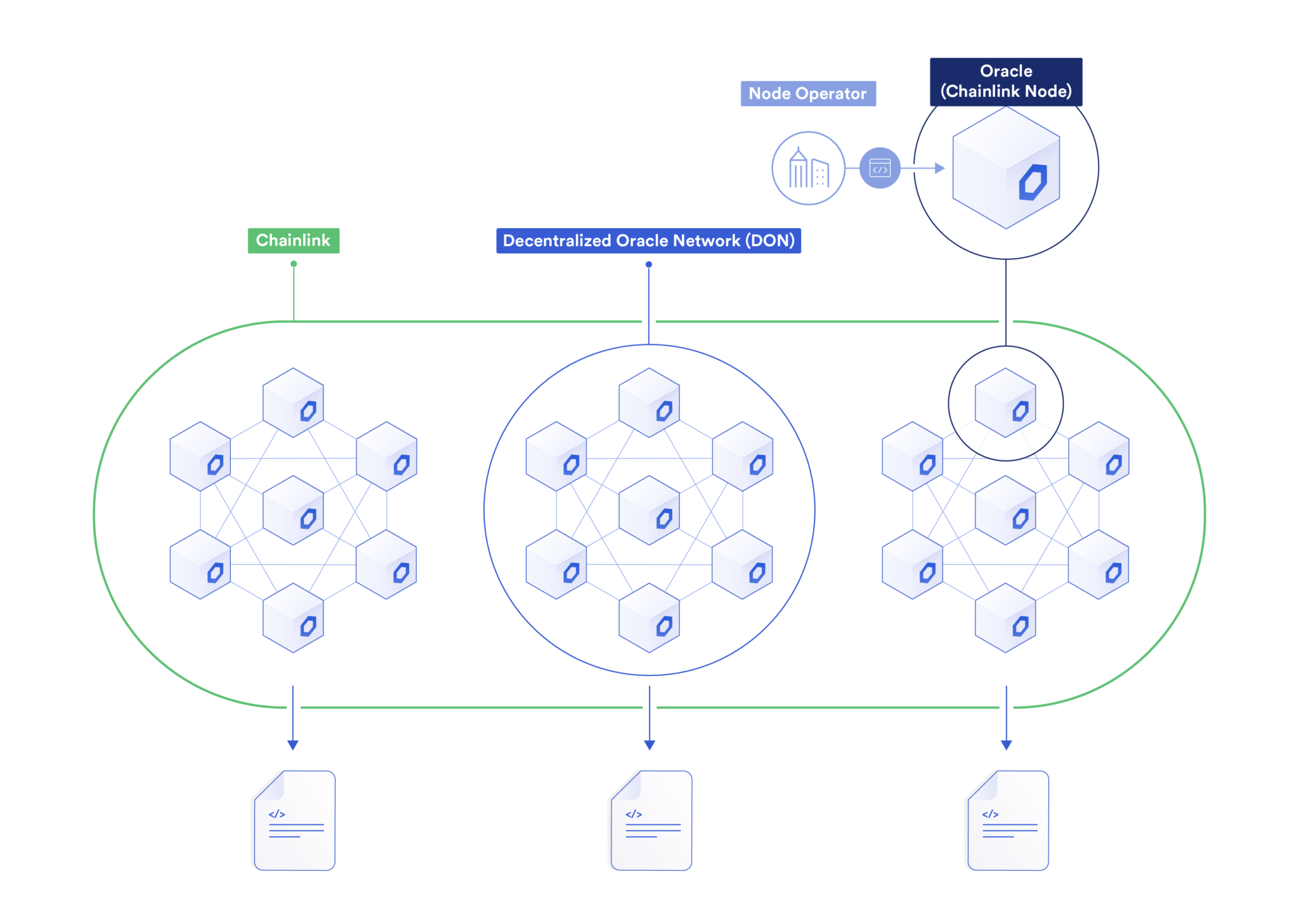
Chainlink Nodes
Chainlink nodes are individual oracles on the Chainlink Network. These oracles are infrastructure run by node operators, which include traditional Web2 telecommunication providers, leading data providers, and Web3 infrastructure providers, such as Deutsche Telekom’s T-Systems, Swisscom, Vodafone, and Infura. Once triggered, Chainlink nodes execute predefined jobs, such as fetching data, performing computation, and/or relaying data to a destination.
Decentralized Oracle Networks
A decentralized oracle network (DON) is akin to a microservice performed in a decentralized manner, wherein a collection of Chainlink nodes form consensus on a specific task and deliver the final result to a destination. For example, a DON consisting of 31 Chainlink nodes can have each node independently fetch data from across multiple sources and generate its own median value. Then, all the nodes’ medianized data is further aggregated into a single data point (i.e., an oracle report), which is delivered by the DON to the intended recipient (e.g., a blockchain application). This process represents a foundational implementation of a new computing paradigm called consensus computing.
Chainlink DONs are underpinned by the Offchain Reporting (OCR) protocol. OCR is the networking, consensus, and transmission software used by Chainlink nodes that enables them to form a DON and perform consensus computing about any arbitrary event. These events can range from the current market price of gold to the amount of rainfall in the Amazon in July to whether or not a buyer received their shipment on time. Alternatively, blockchains utilize consensus computing to maintain a consistent ledger of asset ownership.
Chainlink Network
The Chainlink Network encapsulates all the independent DONs running in parallel at a given moment in time. As such, Chainlink is not a single, monolithic network, but rather a heterogeneous network with a potentially infinite number of DONs running simultaneously, each performing unique oracle services based on the customized needs of its users. For example, one DON may be providing the ETH/USD price to the Ethereum blockchain, another DON transferring tokens cross-chain between the Base and Solana blockchains, and another DON triggering a Swift payment for a smart contract.
The Chainlink Network is blockchain agnostic, meaning it can support any public or private blockchain network. It can also connect to any non-blockchain system. As a result, Chainlink can facilitate communication between any blockchain and any other blockchain or non-blockchain (i.e., offchain) system.
The Chainlink Stack
The Chainlink technology stack supports multiple open standards, which underpin oracle services across four key verticals: 1) Data, 2) Interoperability, 3) Compliance, and 4) Privacy. Chainlink also provides a developer platform for integrating legacy systems and combining oracle services together to support more advanced and customized use cases. Below is a list of some of the DON-powered services for each vertical that have already been built using the Chainlink standards and platform.
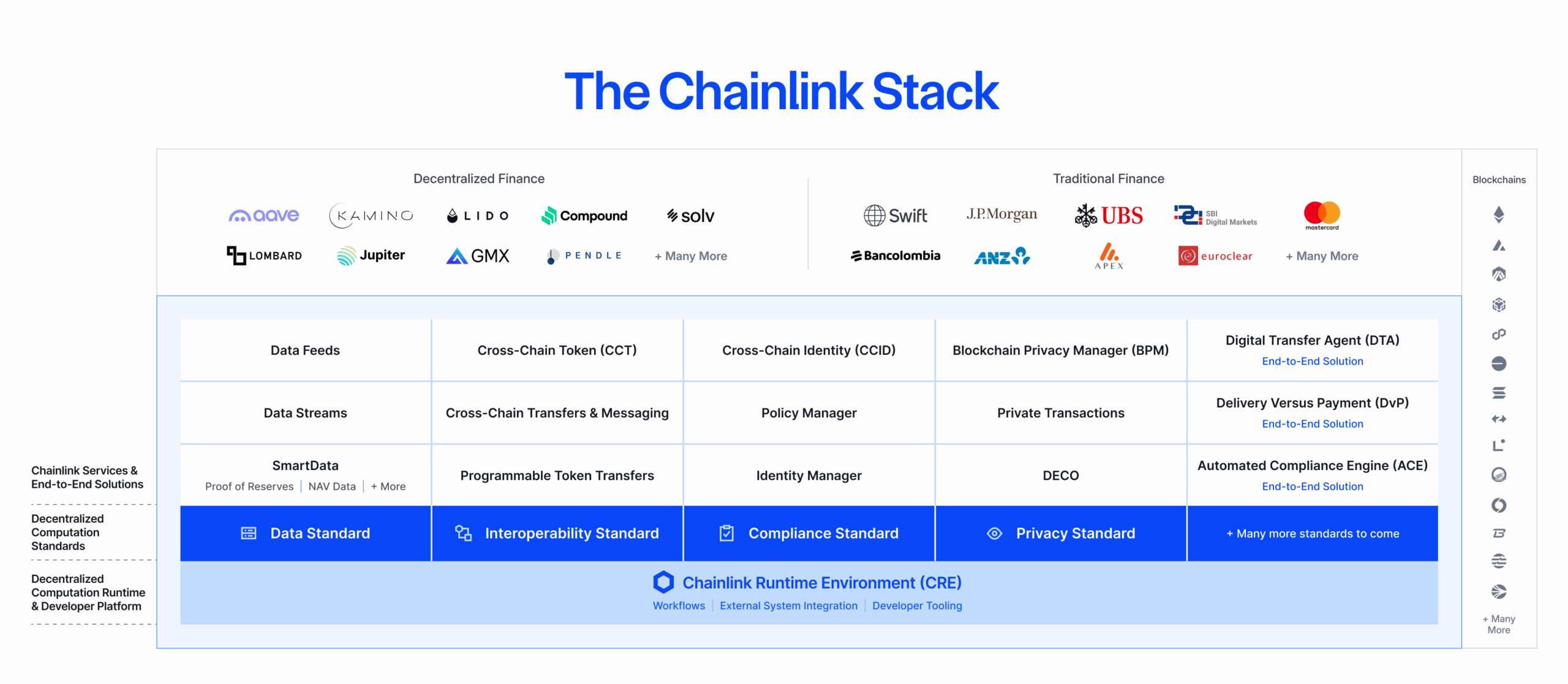
Data
The data standard, underpinned by the Onchain Data Protocol, supports a variety of data oracle services for blockchain applications, tokenized assets, and traditional institutions.
- Chainlink Data Feeds is a push-based oracle solution that provides regular updates of aggregated data onchain, such as cryptocurrency prices, foreign exchange rates, commodity and equity prices, and more. Updates can be time-based (e.g., update at least once a minute) and/or deviation-based (e.g., every 0.5% change in price). Chainlink Data Feeds are the most widely used data solution in DeFi, actively securing tens of billions of dollars in TVL and enabling protocols such as Aave, Compound, SparkLend, and hundreds more to execute actions based on current prices. You can view all Chainlink Data Feeds at https://data.chain.link/feeds and read the Data Feeds docs and How Chainlink Price Feeds Secure the DeFi Ecosystem blog to learn more about the technical design.
- Chainlink Data Streams is a low-latency, pull-based oracle solution where data is made available to users offchain at high-frequency intervals and can be brought onchain by automation services or directly by users. Chainlink Data Streams is ideal for high-throughput markets involving leverage since the data is updated at sub-second frequencies and can be made available to applications at any time. It is widely adopted by DeFi derivatives protocols, with major users like GMX, Kamino, and others using the service to power their perpetuals markets. You can view all Chainlink Data Streams at https://data.chain.link/streams and read the Data Streams docs to learn more about the technical design.
- Chainlink SmartData is a suite of data oracles designed to unlock the utility, accessibility, and reliability of tokenized real-world assets (RWAs). This includes Proof of Reserve feeds that provide the status of reserves for stablecoins, wrapped assets, and real-world assets; NAVLink feeds that provide the real-time Net Asset Value (NAV) of tokenized assets, funds, or portfolios; and SmartAUM feeds that provide the current total market value of assets managed by an entity on behalf of clients.
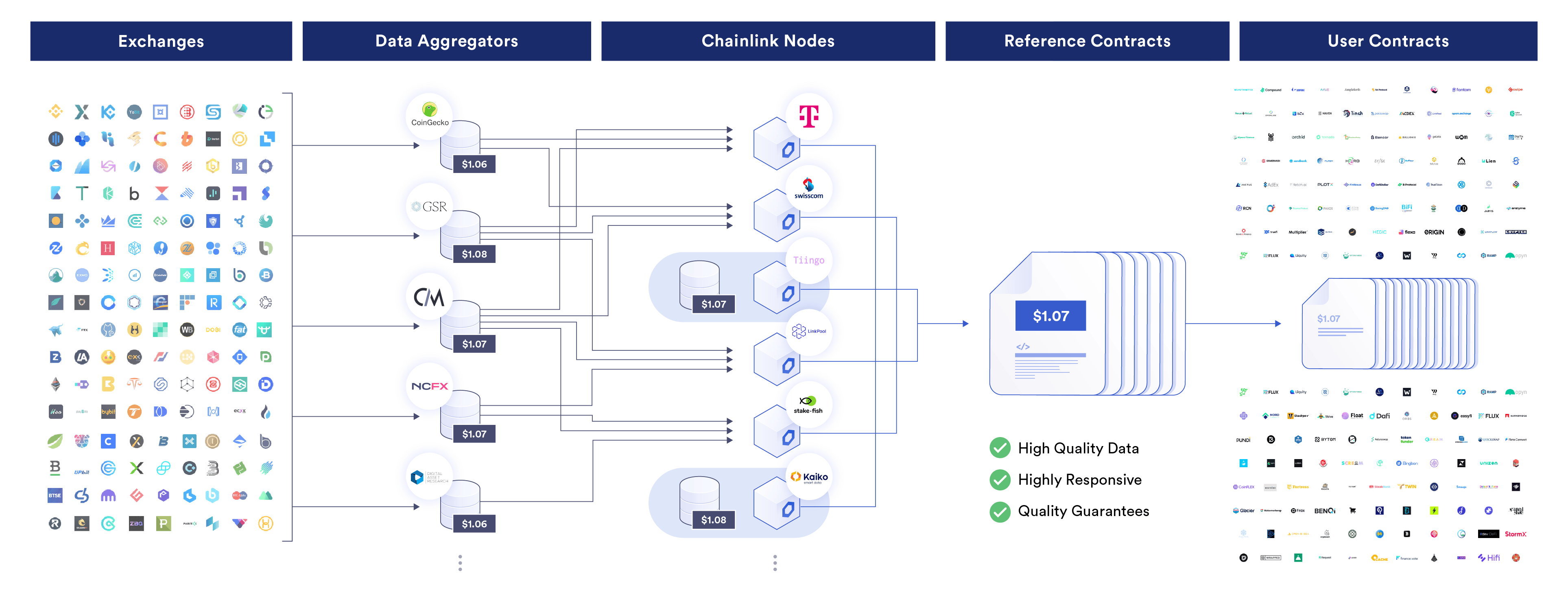
Interoperability
The Chainlink interoperability standard, powered by the Cross-Chain Interoperability Protocol (CCIP), supports a variety of interoperability oracle services for blockchain applications, tokenized assets, and traditional institutions.
- Cross-Chain Messaging and Token Transfers enable data (i.e., messages) and value (i.e., tokens) to move seamlessly and securely across a growing number of public and private blockchains. Top Web3 protocols and leading financial institutions are leveraging CCIP to create cross-chain applications and unlock unified liquidity across blockchains, such as Swift, UBS, Aave (GHO), Solv Protocol (solvBTC), and Lombard (LBTC). For example, CCIP is used to facilitate Delivery vs. Payment (DvP) on blockchains, such as a cross-chain atomic transaction where a stablecoin is used to purchase tokenized real estate.
- Cross-Chain Token (CCT) is a token standard that allows developers to integrate their tokens to CCIP in minutes. CCTs are cross-chain native tokens secured by CCIP. They support self-serve deployments, full control and ownership for developers, enhanced programmability, and zero-slippage transfers—all backed by CCIP’s industry-leading security.
- Programmable Token Transfers enable data and value to be transferred simultaneously across blockchains. This allows tokens to be transferred to a smart contract on another blockchain, along with instructions on what the smart contract should do with those tokens once they arrive. For example, a user could transfer tokens to a lending protocol with instructions to leverage those tokens as collateral for a loan.
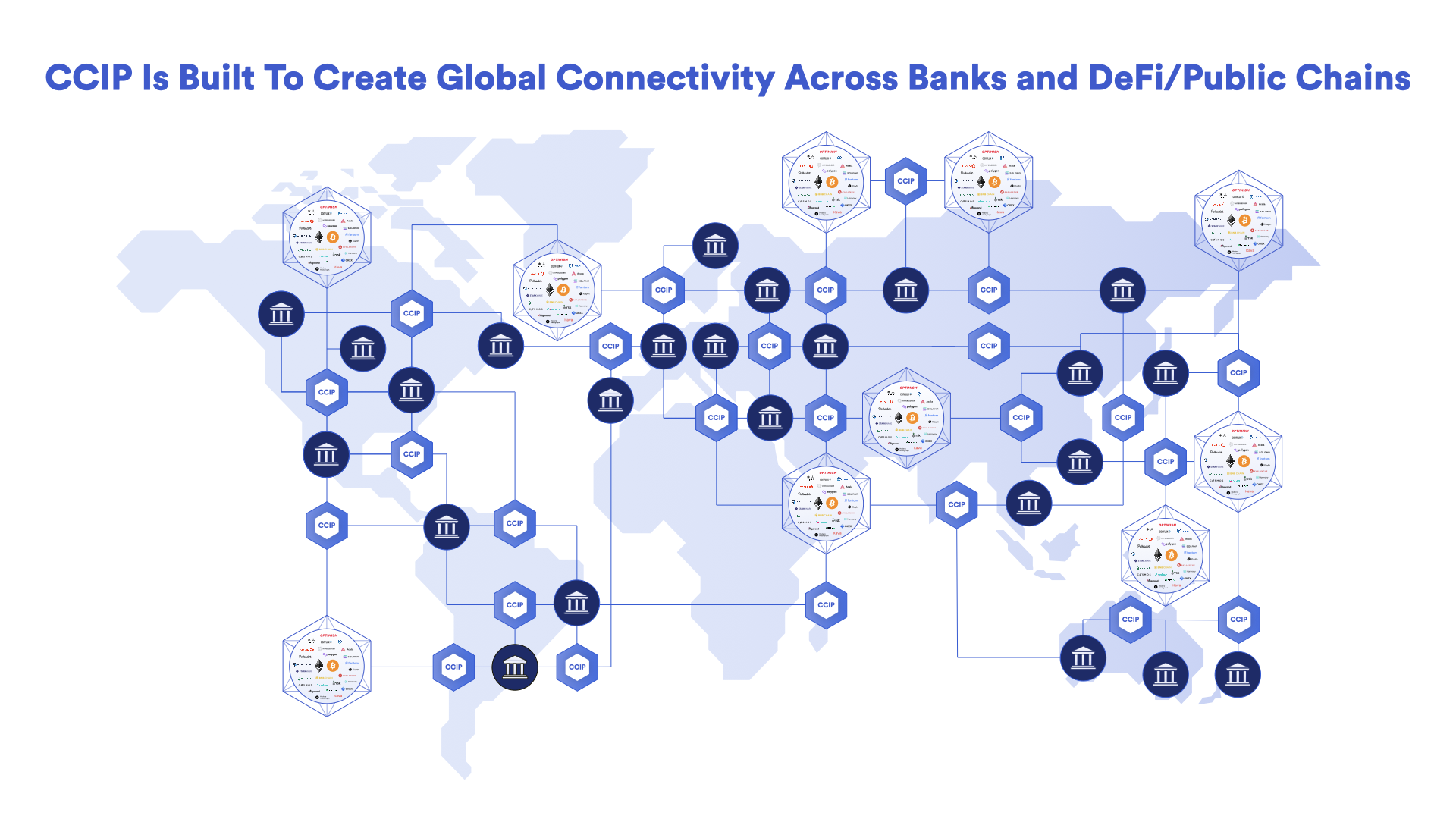
Compliance
The Chainlink compliance standard, powered by the Onchain Compliance Protocol (OCP), supports a variety of compliance oracle services for blockchain applications, tokenized assets, and traditional institutions. These services can be composed together to support end-to-end compliance-focused solutions via the Chainlink Automated Compliance Engine (ACE).
- Cross-Chain Identity (CCID) Framework: A reusable identity framework for representing investor identities, attestations, and credentials across multiple blockchains. CCID stores cryptographic proofs onchain of verified credentials, such as KYC, AML, accredited investor status, and more.
- Policy Manager: A customizable rules engine that enables users to define, manage, and enforce compliance policies directly within smart contracts, with onchain or offchain execution.
- Identity Manager: A middleware that links real-world identity sources to various onchain formats, enabling the registration, distribution, synchronization, and lifecycle management of identity credentials across networks without storing NPI/PII onchain.
- Monitoring & Reporting Manager: A service for observing infrastructure, smart contracts, and third-party integrations for non-compliance, anomalies, and system failures, facilitating real-time alerts, proactive risk mitigation, and strengthened operational resilience. It also enables institutions to obtain reports to support internal and regulatory compliance.
To learn more, check out the Chainlink ACE launch blog and technical overview.
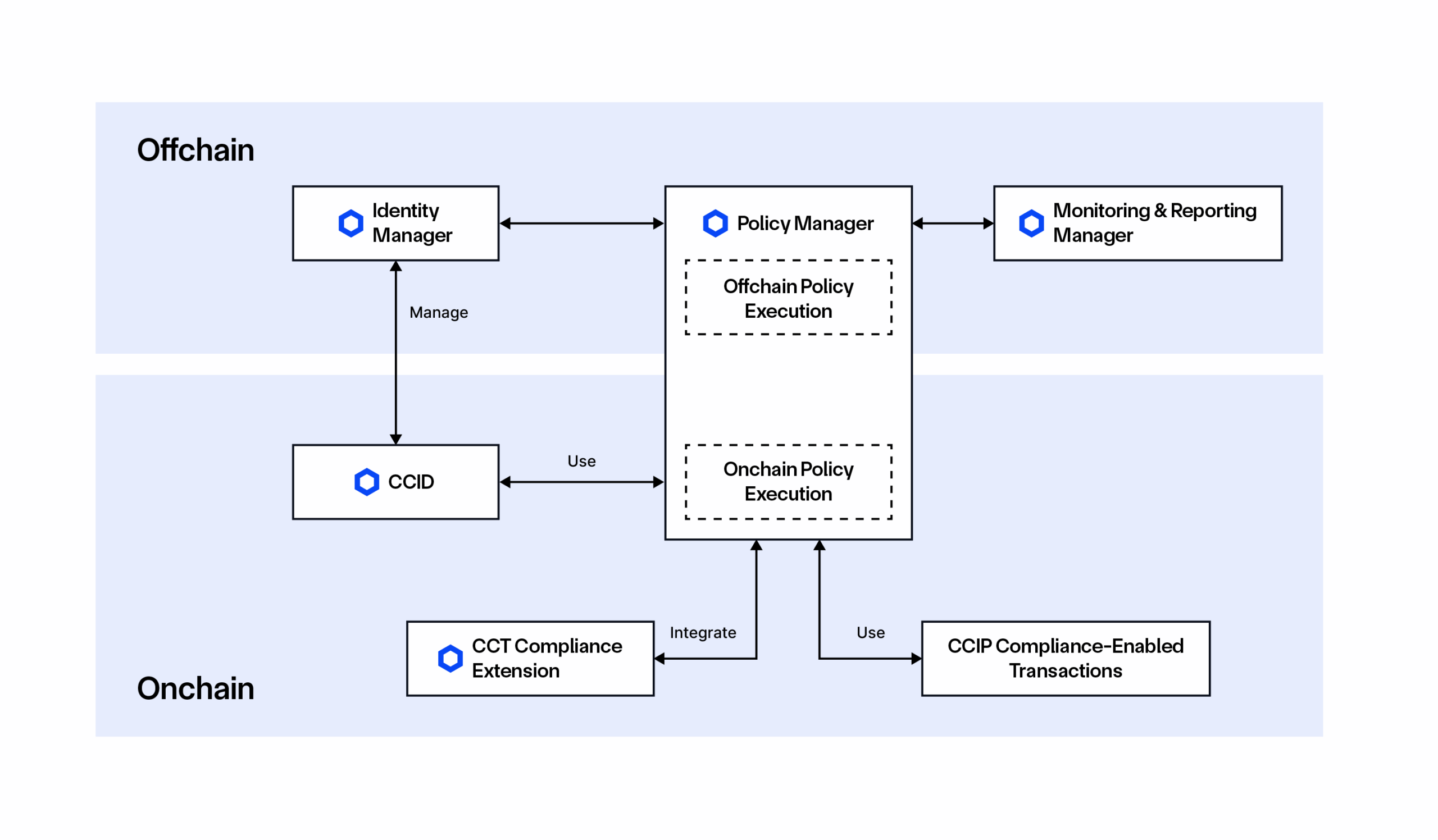
Privacy
The Chainlink privacy standard supports a variety of privacy oracle services for blockchain applications, tokenized assets, and traditional institutions.
- DECO enables statements about external data to be shared onchain without revealing the underlying data.
- Blockchain Privacy Manager enables institutions to integrate the public Chainlink Network and their existing systems with private blockchains while limiting the exposure of data onchain.
- CCIP Private Transactions leverages the Blockchain Privacy Manager and a novel onchain encryption/decryption protocol to enable institutions to transact across multiple private blockchains using the public CCIP network while keeping the transaction details confidential.
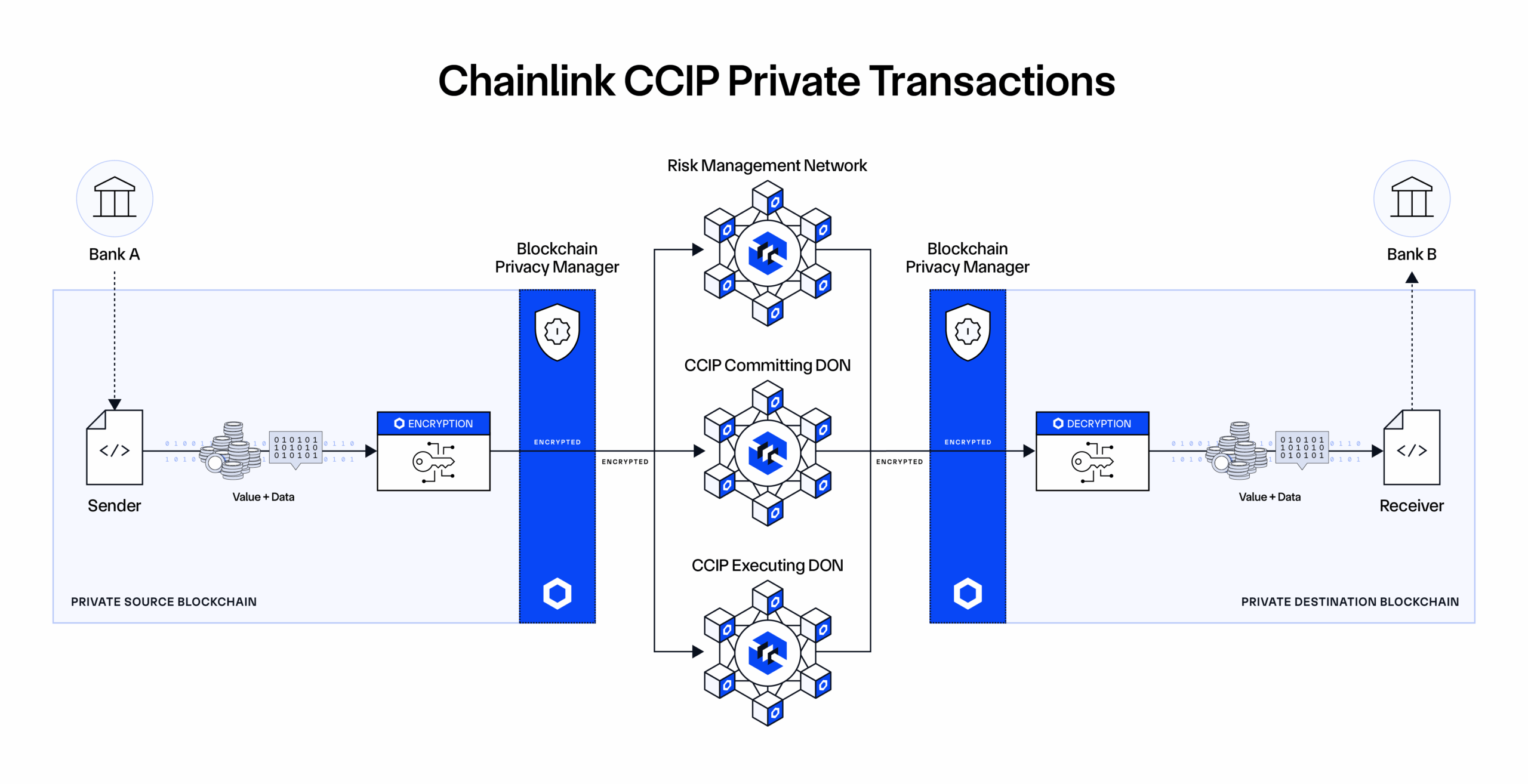
The Ongoing Upgrade to the Chainlink Runtime Environment
Chainlink is currently in the process of transitioning to the Chainlink Runtime Environment (CRE), a new architecture first introduced at Chainlink’s annual SmartCon conference in 2024.
In the current iteration of Chainlink, a single decentralized oracle network is often responsible for performing all jobs related to provisioning a specific service. For example, the DON powering the ETH/USD Data Feed on Ethereum has to 1) retrieve data from multiple APIs, 2) come to consensus between multiple nodes on a median answer, and 3) deliver the data to Ethereum. Then, in order to provide a different data point (e.g., BTC/USD) or deliver the data to a different blockchain (e.g., Base), an entirely new DON needs to be deployed.
In the new CRE model, each of the individual jobs (referred to as capabilities) involved in provisioning a service is split up across dedicated DONs. For instance, one DON will fetch data from specific APIs, another DON will perform consensus, and another DON will write the data to a specific blockchain. Through specialization of work, the same DON can be reused across applications requiring the same capability. Furthermore, if a new blockchain emerges, a new DON can be quickly created to read/write to that chain, providing that chain instant access to all other Chainlink services.
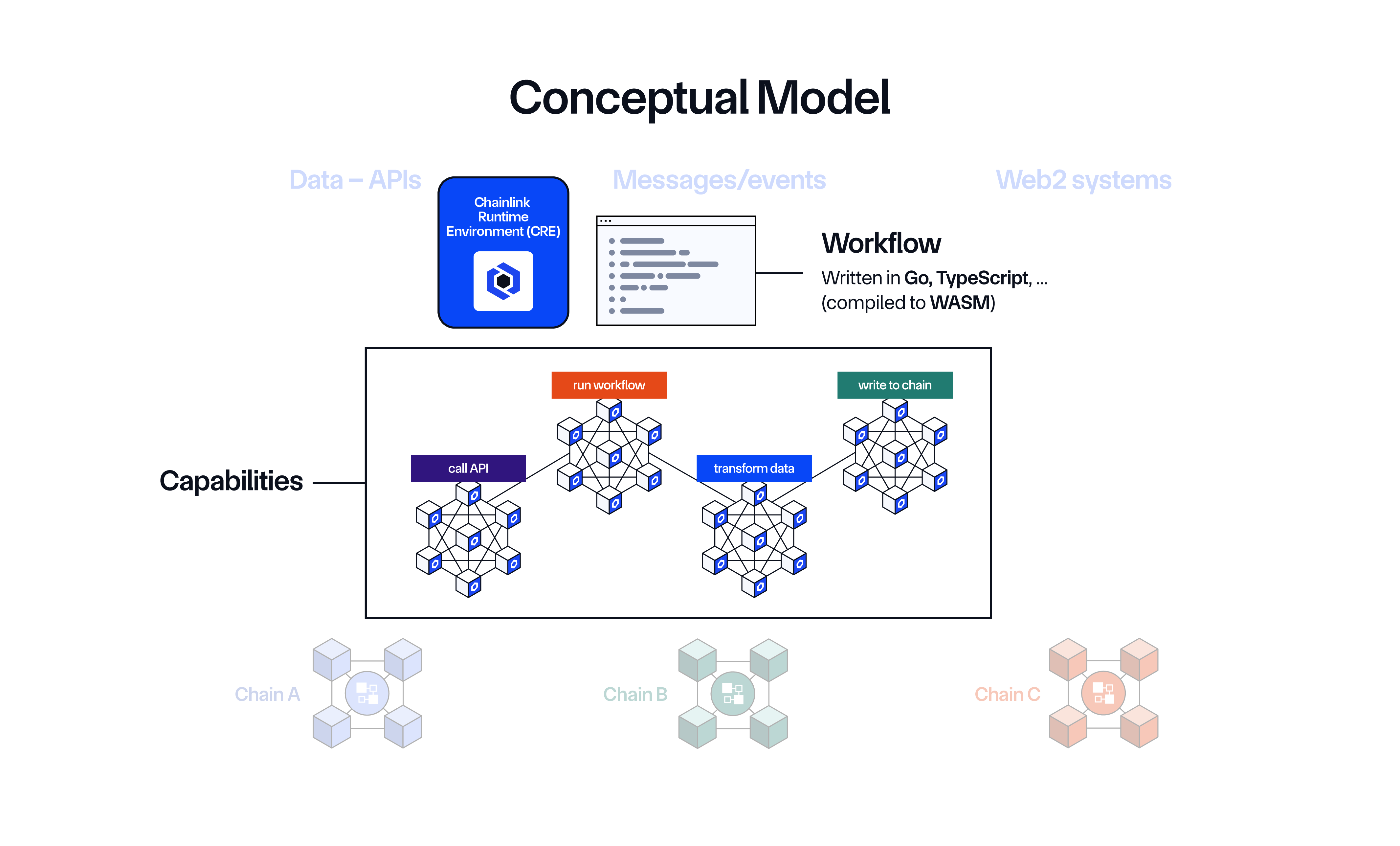
CRE also empowers developers to combine different blockchains, legacy systems, and oracle services into their own custom workflows to unlock advanced use cases. As part of this model, Chainlink supports a fifth type of oracle service in orchestration, where a DON is used to power the application step-by-step across its full lifecycle, which involves both onchain and offchain processes.
The CRE upgrade is key to expanding Chainlink across any blockchain and meeting the growing demand from capital markets and Web3, as developers can build in a self-serve manner and customize however they want. For instance, developers can build a blockchain application via CRE, and then easily modify that app without needing to rewrite it, such as swapping one capability (e.g., writing the data to Ethereum) with a different capability (e.g., writing the data to Base) to expand the app to Base.
Chainlink: The Industry-Standard Oracle Platform
It’s clear: the world’s data and value is moving onchain. Chainlink is the oracle infrastructure connecting everything in this new onchain world, empowering developers to build unified applications that seamlessly interact across blockchains and existing systems. In doing so, developers can build advanced applications that actually unlock real, tangible value for the world.
Chainlink has already enabled $25+ trillion in onchain transaction value and supports many of the world’s largest institutions, governments, and decentralized applications through its data, interoperability, compliance, privacy, and orchestration services. The future is onchain, and Chainlink provides the connectivity to make it a reality.
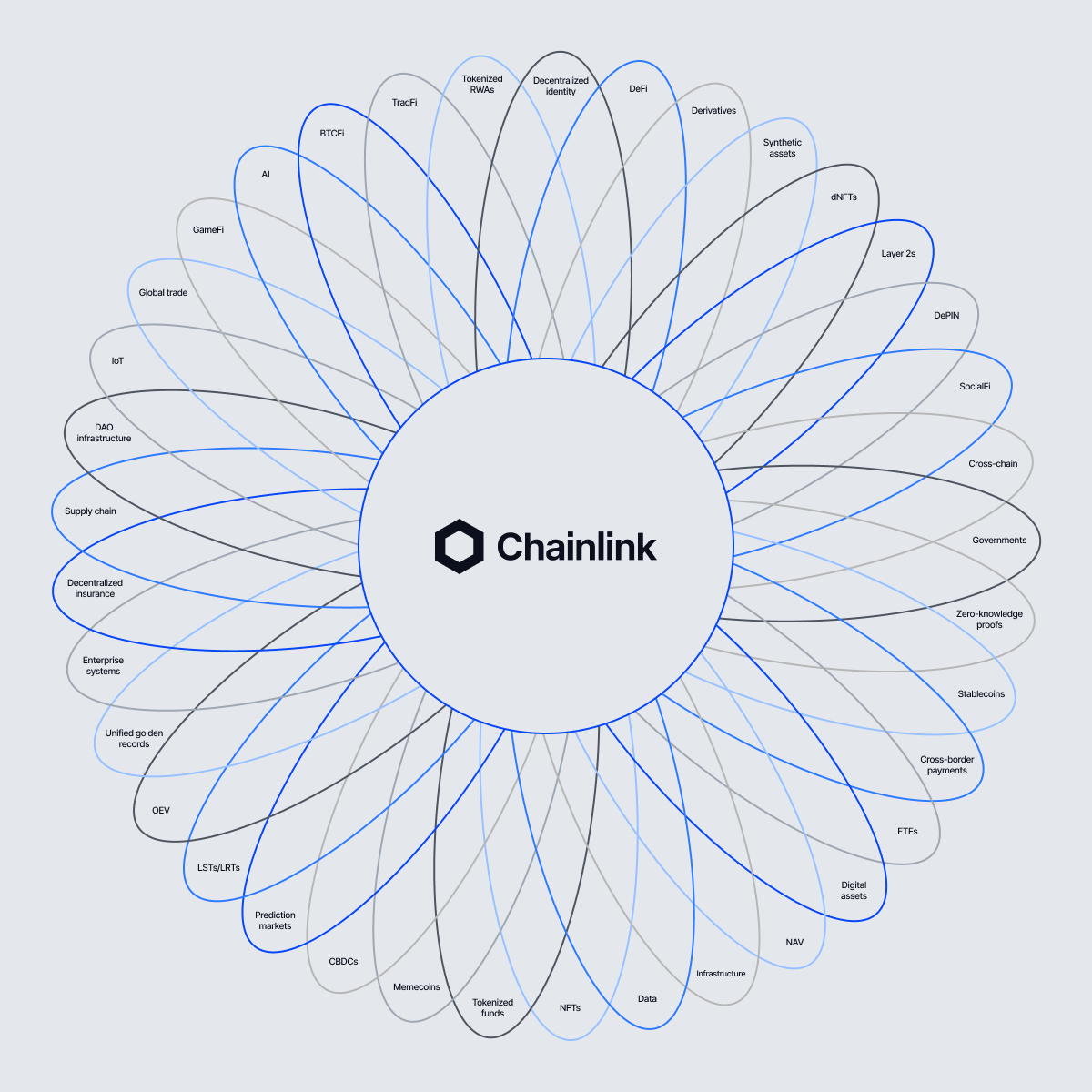
To learn more about Chainlink, visit chain.link, subscribe to the Chainlink newsletter, and follow Chainlink on Twitter, YouTube, and Reddit.
